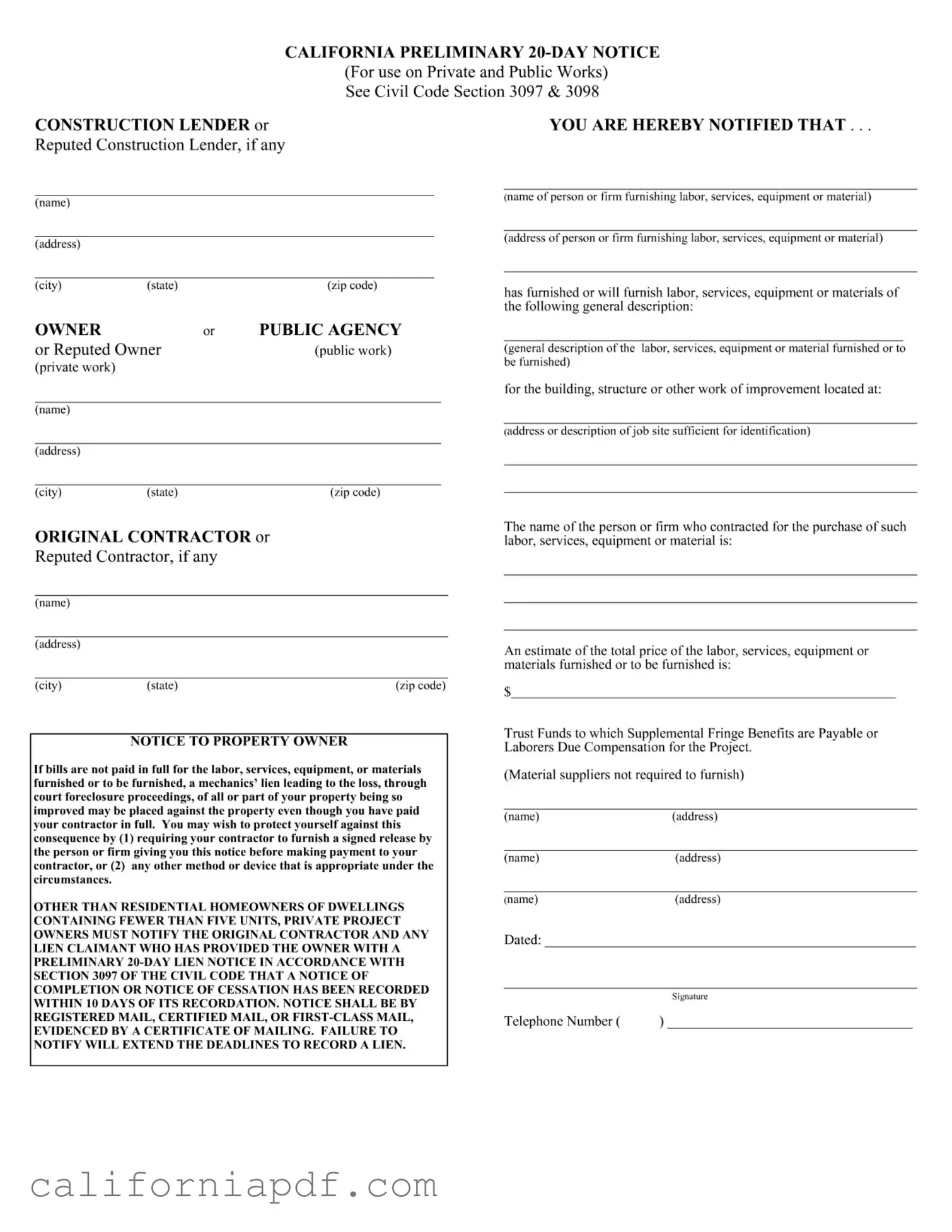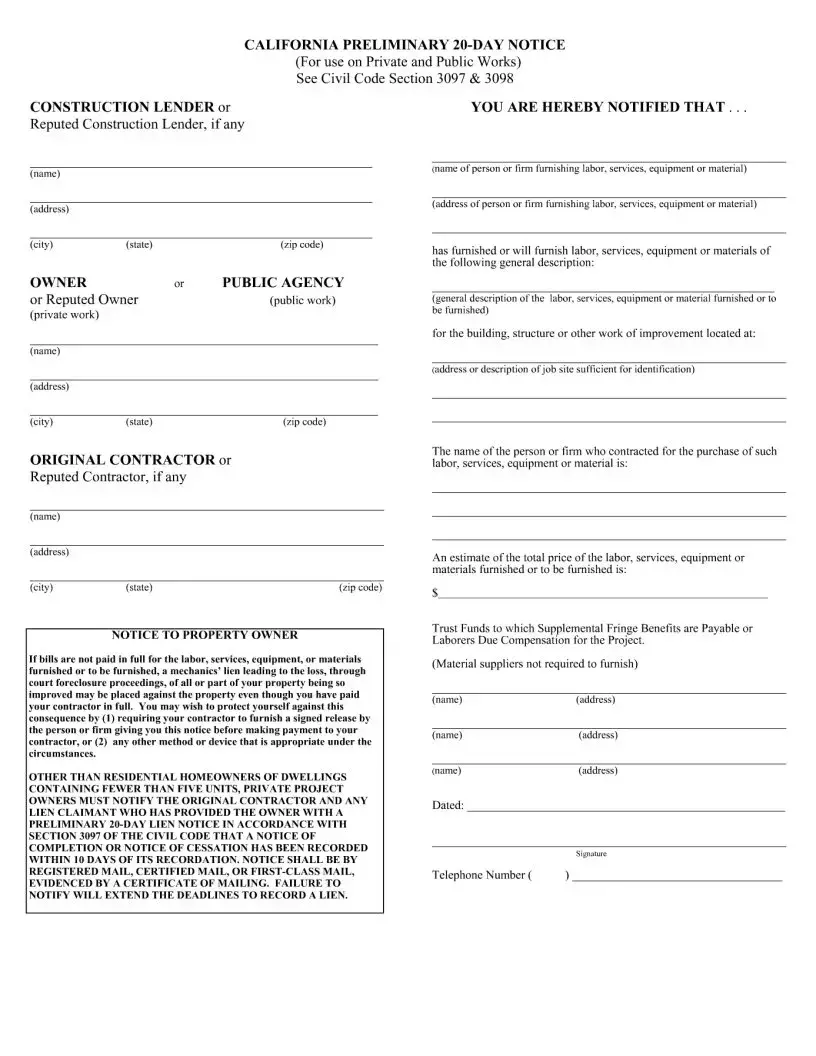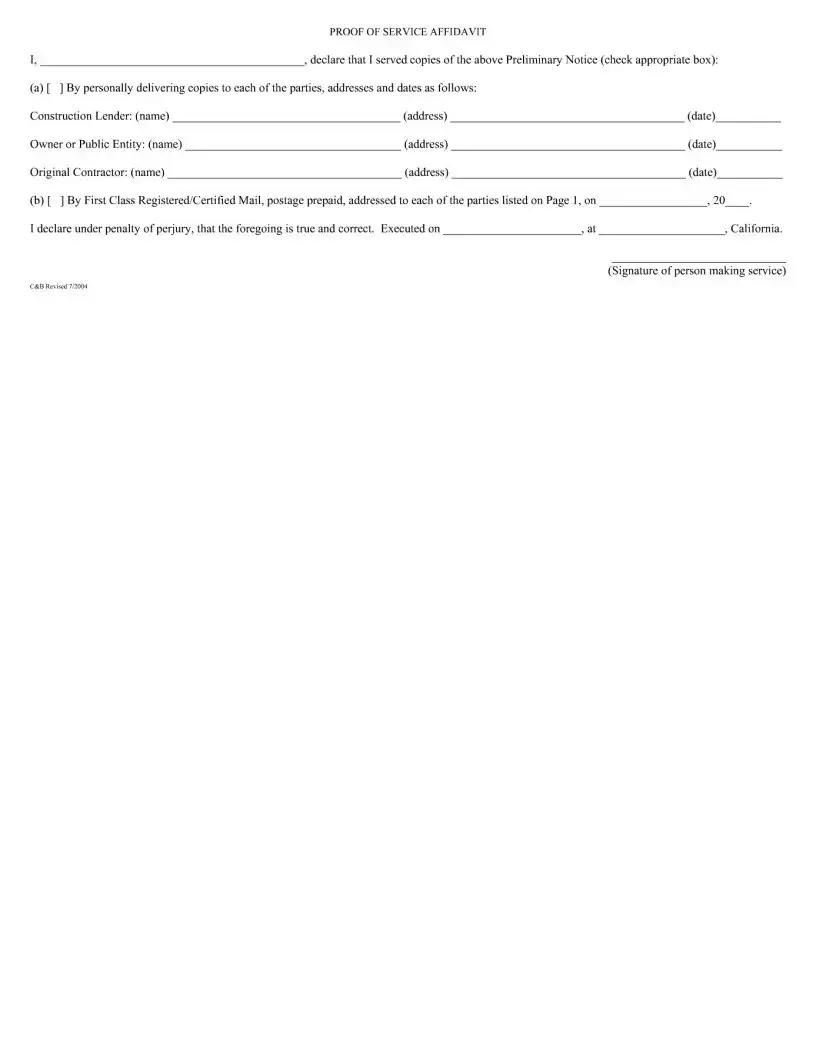The California Preliminary 20 Day Notice is an essential document that sets the groundwork for protecting a party's right to file a mechanics lien. A similar document is the Notice of Intent to Lien. This document acts as a warning to the property owner, general contractor, and others that the claimant intends to file a mechanics lien unless payment issues are resolved. Both forms serve as a precautionary step, aiming to prompt payment before taking more drastic measures.
Another document akin to the California Preliminary 20 Day Notice is the Mechanics Lien itself. Whereas the Preliminary 20 Day Notice is a precursor, notifying parties of the potential for this legal claim if payment isn't made, the Mechanics Lien is the actual claim filed against the property title when payment isn’t forthcoming. Both documents are pivotal in the construction industry, safeguarding the rights and interests of contractors and suppliers.
The Stop Payment Notice is also closely related, serving a similar purpose but through a different legal pathway. This notice is given to the property owner or financing institution, advising them to withhold funds from the contractor until specified issues, such as non-payment to subcontractors or suppliers, are resolved. Like the Preliminary 20 Day Notice, it's a protective measure, though it affects the flow of funds rather than the property title directly.
Conditional and Unconditional Waiver and Release Forms upon Final or Progress Payment are documents often used in conjunction with the California Preliminary 20 Day Notice. These waivers indicate whether certain rights are being waived, either conditionally or unconditionally, upon a progress or final payment. They are essential for clarifying the state of payments and any rights to file liens at different project stages, complementing the notice by marking the resolution of payment disputes.
The Materialman’s Lien is another lien type, similar to the Mechanics Lien but specific to those supplying materials rather than labor. It follows a similar premise to the California Preliminary 20 Day Notice in that it secures suppliers’ rights to seek compensation through a property lien. The Preliminary Notice ensures those involved are aware of the pending claim possibilities if payments are neglected.
A Release of Lien is the successor in the process begun by the California Preliminary 20 Day Notice. Once a Mechanics Lien is filed and then satisfied - either through payment or other means - a Release of Lien form is necessary to clear the property title of the lien. It completes the cycle initiated by the preliminary notice, ensuring all parties are aware that the financial obligation has been fulfilled, and the lien no longer affects the property.
The Payment Bond Claim serves a purpose analogous to the Mechanics Lien but in projects where a payment bond covers the work. Like the Preliminary 20 Day Notice, this document signals to the surety and principal the intent to claim payment for services or materials provided, thus ensuring recovery efforts can proceed if payments are not made. Both documents are instrumental in communicating claims for payment in their respective spheres.
The Notice of Completion is a document signaling the culmination of a construction project, which indirectly relates to the Preliminary 20 Day Notice by marking the timeframe in which claims for payment, such as Mechanics Liens, must be filed. The Notice of Completion can shorten the period a claimant has to file a lien, emphasizing the importance of timely action following the Preliminary 20 Day Notice to secure lien rights.
Last but not least, the Demand for Payment letter, while not a formal legal document like the California Preliminary 20 Day Notice, serves a complementary role. It is a straightforward request for payment that can precede more serious legal notices. The letter can be a precursor or a follow-up to the Preliminary 20 Day Notice, reinforcing the message that payment is due and actions will be taken to secure what is owed.


